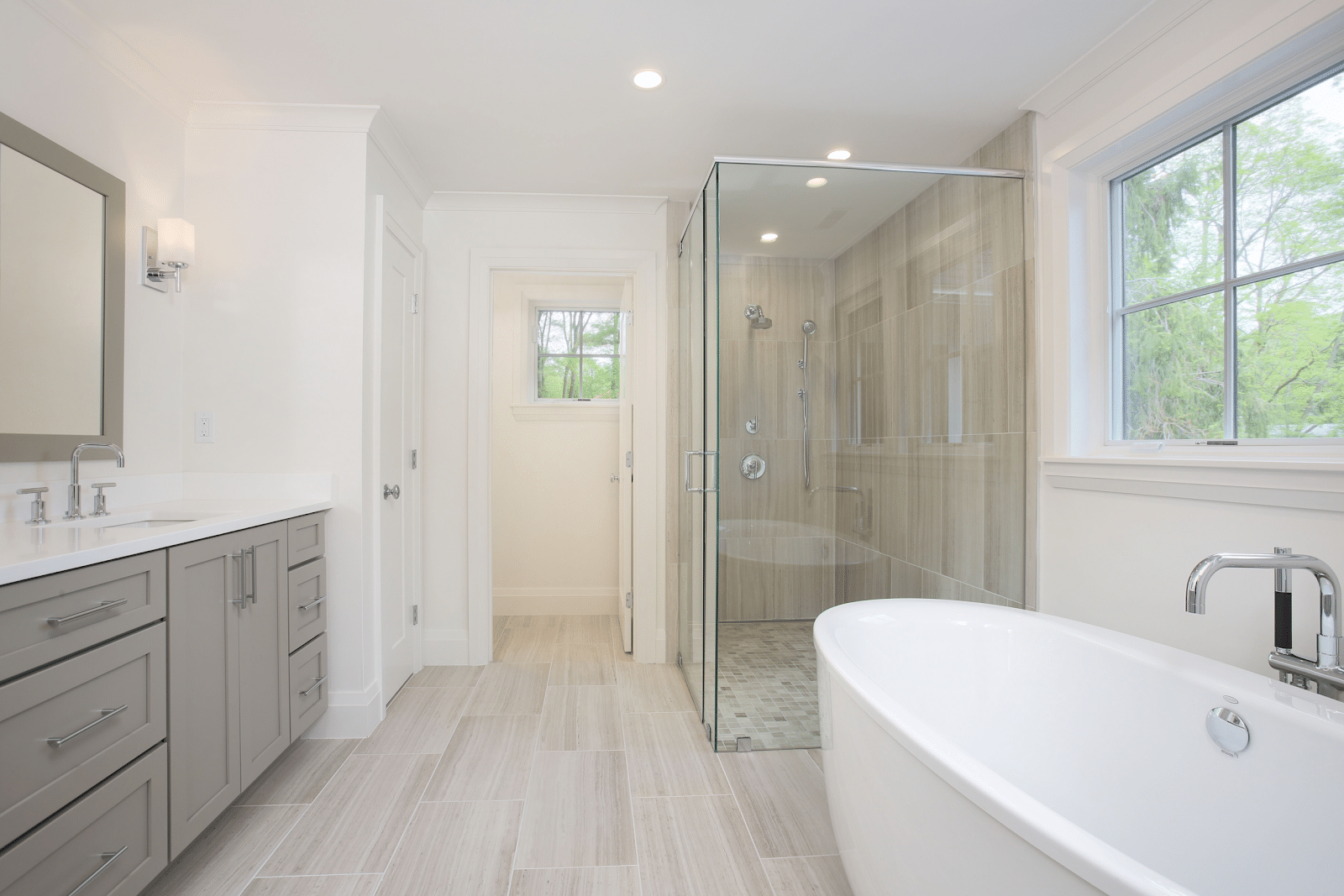The Beauty and Functionality of Crown Molding in Small Bathrooms: Crown Molding Small Bathroom

Crown molding can transform a small bathroom from ordinary to extraordinary, adding a touch of elegance and sophistication that elevates the overall aesthetic appeal. Its subtle yet impactful presence can make a small bathroom feel larger and more inviting, creating a sense of luxury that is both visually pleasing and functional.
The Visual Impact of Crown Molding, Crown molding small bathroom
Crown molding has a remarkable ability to enhance the visual appeal of a small bathroom, creating a sense of grandeur and sophistication that is often associated with larger spaces. The molding’s intricate details and elegant lines draw the eye upwards, visually expanding the space and making the ceiling appear higher. This vertical emphasis creates a sense of openness and airiness, combating the feeling of confinement that can sometimes be present in small bathrooms.
Creating the Illusion of Space
Crown molding’s ability to create the illusion of a larger space is a key benefit in small bathrooms. By drawing the eye upwards, it distracts from the limited floor area, making the room feel more spacious and less cramped. The molding’s decorative elements, such as intricate patterns or ornate details, can also add a touch of visual interest, further diverting attention from the size of the bathroom.
Practical Benefits of Crown Molding
Beyond its aesthetic appeal, crown molding offers practical benefits in a small bathroom. It can effectively conceal imperfections in the ceiling, such as minor cracks or uneven surfaces, creating a seamless and polished look. Additionally, crown molding can serve as a decorative trim around the ceiling, adding a touch of elegance and sophistication that complements the overall design of the bathroom.
Installing Crown Molding in a Small Bathroom

Installing crown molding in a small bathroom can significantly enhance its visual appeal and create a sense of grandeur. The process requires careful planning and execution to ensure a professional finish. This guide provides step-by-step instructions and practical tips to achieve a seamless installation.
Measuring and Cutting Crown Molding
Precise measurements are crucial for a successful crown molding installation. This section Artikels the steps involved in measuring and cutting the molding to ensure a perfect fit.
- Measure the perimeter of the room: Begin by measuring the length of each wall where you plan to install the crown molding. It’s important to measure along the bottom edge of the wall, where the molding will be attached.
- Consider the corners: When measuring the perimeter, account for the corners of the room. You’ll need to calculate the miter cuts for the molding to fit seamlessly around the corners.
- Transfer measurements to the molding: Once you have the measurements for each wall, transfer them to the crown molding using a pencil or marking tool.
- Cut the molding: Using a miter saw, carefully cut the molding at the designated angles. Ensure the cuts are precise to avoid gaps or misalignments.
Attaching Crown Molding
Attaching crown molding to the walls requires a combination of precision and skill. This section provides detailed instructions on how to secure the molding using adhesive or nails.
- Prepare the walls: Before attaching the crown molding, ensure the walls are clean and free of debris. If necessary, use sandpaper to smooth out any rough spots.
- Apply adhesive: For a secure and seamless installation, apply construction adhesive along the back of the crown molding. This will help to hold the molding in place while it dries.
- Position the molding: Carefully position the crown molding against the wall, aligning it with the ceiling line. Ensure the molding is level and straight before pressing it firmly into place.
- Secure with nails: For added support, use finishing nails to secure the crown molding to the wall. Drive the nails at an angle, countersinking them below the surface of the molding.
- Fill nail holes: Once the crown molding is securely attached, fill any nail holes with wood filler. Allow the filler to dry completely before sanding it smooth.
Painting or Staining Crown Molding
Painting or staining crown molding is an essential step in completing the installation process. This section provides tips for achieving a professional finish that complements the overall bathroom design.
- Prepare the surface: Before painting or staining, ensure the crown molding is clean and free of dust or debris. Lightly sand the surface to create a smooth finish and enhance paint adhesion.
- Prime the molding: Priming the crown molding helps to create a uniform surface for painting and prevents the wood from absorbing too much paint.
- Choose the right paint or stain: Select a paint or stain that complements the overall bathroom design and provides the desired level of sheen. Consider using a high-quality, moisture-resistant paint specifically designed for bathrooms.
- Apply paint or stain: Apply the paint or stain in thin, even coats, allowing each coat to dry completely before applying the next.
- Clean up: After painting or staining, clean up any spills or drips immediately to prevent them from staining the molding.
